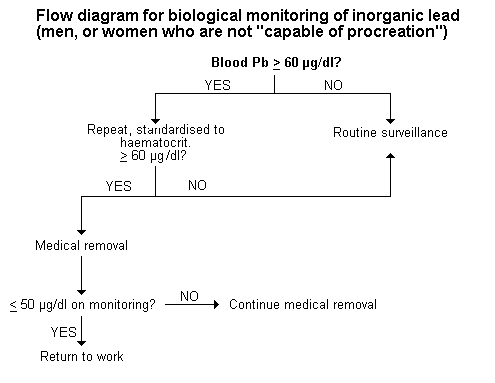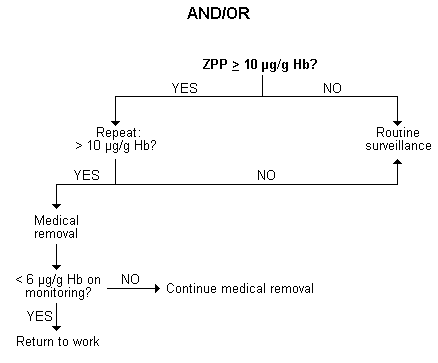
The Lead Regulations, in terms of the Occupational Health and Safety Act 85 of 1993, apply to all employers and self-employed people at workplace where lead is produced, processed, used, handled or stored in a form in which it can be inhaled, ingested or absorbed.
The regulations cover among others things the need for worker information and training, assessment of potential exposures, air monitoring, demarcation of respirator zones and medical surveillance.
All employers must inform and train workers regarding the scope of the legislation, the risks, preventive measures, medical surveillance, etc., before they are exposed to lead.
Workers who are exposed to lead also have responsibilities under the Regulations. This includes reporting for medical surveillance and using the appropriate PPE when needed.
The occupational exposure Limit (OEL) for tetraethyl lead (TEL - organic lead) is 0.10 mg per cubic meter of air and for lead other than TEL (i.e. inorganic lead) 0.15 mg per cubic meter of air. Air monitoring is required where the exposure level of lead is in excess of half of the OEL.
Note that these exposure limits have several limitations regarding worker protection. These levels have been developed for lead dust exposure and may not be sufficient to protect workers from lead fume exposure given the much higher bioavailability of lead fume. There are also personal and behavioural influences on absorption. Cigarette smoking and eating in the workplace may result in hand to mouth exposure, not reflected in the the air level. Beards may interfere with respirator fit or have some other enhancing effect on absorption.
These levels are also not adequate to protect children who are in the workplace (e.g. in "informal" operations) or in a working mother's womb. Lastly, using sensitive indices of neurologic function one can measure alterations in nerve conduction velocity and cognitive function of workers at or below blood levels which may be expected at these exposure limits.
Medical surveillance is based on biological monitoring and biological effect monitoring. The medical removal standard for lead is 60 micrograms of lead per 100 ml of blood (60 µg/dl), or 10 µg ZPP per gram of haemoglobin (10 µg/g Hb). (NOTE: WHOLE BLOOD NOT SERUM IS NEEDED IN BOTH CASES).

Note:

Records on the medical surveillance, industrial hygiene assessments and training must be kept for forty years. Special precautions have to be taken with regard to the disposal and transport of lead.
Department of Labour. Lead Regulations, 2001. Government Gazette 23175, 28 February 2002. Printed by Government Printer, Pretoria

Postgraduate Diploma in Occupational Health (DOH) - Modules 3: Occupational Medicine & Toxicology (Basic) by Profs Mohamed Jeebhay and Rodney Ehrlich, Health Sciences UCT is licensed under a Creative Commons Attribution-Noncommercial-Share Alike 2.5 South Africa License. Major contributors: Mohamed Jeebhay, Rodney Ehrlich, Jonny Myers, Leslie London, Sophie Kisting, Rajen Naidoo, Saloshni Naidoo. Source available from here. For any updates to the material, or more permissions beyond the scope of this license, please email healthoer@uct.ac.za or visit www.healthedu.uct.ac.za.
Last updated Jan 2007.
Disclaimer note: Some resources and descriptions may be out-dated. For suggested updates and feedback, please contact healthoer@uct.ac.za.